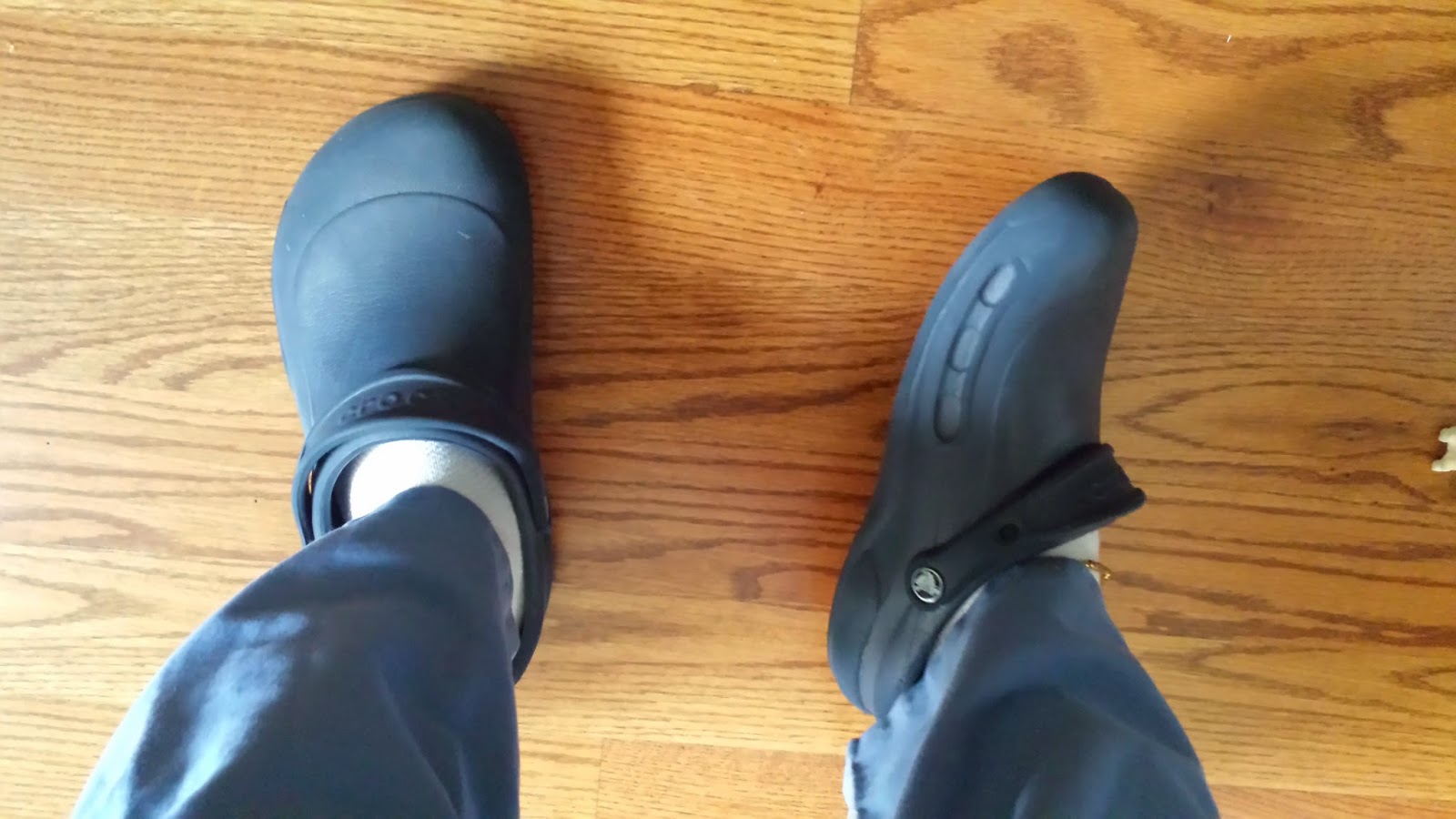DANSKOS
Known as the mother of all hospital shoes, Danskos clogs are anatomically created to mold to your foot over several wears. The heel is open and enlarged allowing feet to move comfortably within the shoe. From personal experience, they are a bit uncomfortable to wear at the beginning due to the high arch but it gets better over time.
I have had my pair since medical school and absolutely love them! They are durable, sturdy, and don't have my feet aching at the end of the day.They also come in various designs allowing for individuality when wearing scrubs.
CROCS
Yes their not the nicest looking shoes, yes they can squeak sometimes, but yes they are amazing! The loose fit of the shoes allows for a natural bend while walking. The odor resistant material keeps your feet from smelling after keeping them on for a long time. (I would suggest socks, those help to!) The closed heel and toe meets workplace standards, making it safe against biohazards and needle injury.
I have had my Crocs for at least two years. I love the ease of slipping them on and off throughout the day when I just want my feet to breath.
BIRKIE
Flexible, man-made clogs created by the shoe company Birckenstock, Birkie's boast a removable footbed allowing you to change them when they become worn and thus increasing the longevity of the shoe. Their deep heel cup allows for better posture and decreased back pain. The longitudinal arch support distributes weight evenly also decreasing fatigue from wearing the same shoe for several hours.
CALZURO
Initially created for surgeons, these Italian made shoes have quickly become popular due to their massage bump infused soles which promote constant blood circulation within the feet. The comfort insoles provide cushion support with an arch that conforms to your foot. The one and half inch heel also provides all day support so your feet don't hurt when you take them off at the the day. One great aspect of Calzuros are that they can be cleaned via autoclave, withstanding up to 300 degrees of heat and ensuring all nasty hospital germs are killed.
ALEGRIA
Alegria shoes boast leather-based vibrant prints and colors, with patented, countour-forming footbeds. The rocker bottom outsole allows for your foot to roll naturally .The arch support is made up of memory foam, cork, and latex allowing for a customized fit.
Many of these shoes have been approved by the American Podiatric Medical Association meaning they promote good foot health and allow for normal foot function. Almost all of these shoes have anti-slip protection which are essential if you have to run to a code or other emergency situation. Most also offer either side or top vents allowing your feet to breath. The synthetic shoes (Crocs, Birki's, Calzuro's) can all be easily washed with soap and water or sterilized with bleach.
The price of these shoes range from $40-$150 but discount stores like TJ Maxx and Marshalls sometimes carry them for half the price. Shoe stores like the Walking Company often times will give discounts to local hospitals workers with a hospital ID.
Hopefully all these options will provide some relief from tired, aching feet.
Are there any shoes you would suggest for long hours on your feet?












